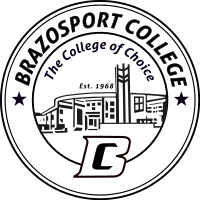What do they do?
Set up, operate, or tend machines to crush, grind, or polish materials, such as coal, glass, grain, stone, food, or rubber.
Also known as:
Beveler Operator, Crusher Operator, Cullet Trucker, Grinder, Grinder Operator, Machine Operator, Machine Tender, Mill Operator, Miller, Operator, Polisher, Preparation Operator (Prep Operator), Pulverizer
-
-3.5%
Change
Select a state to see its job growth rate ranking2,800Job Openings
Select a state to see its net job growth ranking
Colleges with the most graduates that become Crushing, Grinding, and Polishing Machine Setters, Operators, and Tenders
Looking for colleges that offer a specific major? Use the College Match Tool to find your best-matched schools and discover your estimated Net Price!
- High school diploma equivalent (47%)
- Some college, no degree (19%)
- Less than high school diploma (18%)
- Associate's degree (9%)
- Bachelor's degree (6%)
- Master's degree (1%)
- Doctorate or Professional Degree (<1%)
People in this career often know a lot about:
- Administration and Management - Knowledge of business and management principles involved in strategic planning, resource allocation, human resources modeling, leadership technique, production methods, and coordination of people and resources.
- Production and Processing - Knowledge of raw materials, production processes, quality control, costs, and other techniques for maximizing the effective manufacture and distribution of goods.
People in this career often have talent in:
- Manual Dexterity - The ability to quickly move your hand, your hand together with your arm, or your two hands to grasp, manipulate, or assemble objects.
- Control Precision - The ability to quickly and repeatedly adjust the controls of a machine or a vehicle to exact positions.
- Arm-Hand Steadiness - The ability to keep your hand and arm steady while moving your arm or while holding your arm and hand in one position.
- Multilimb Coordination - The ability to coordinate two or more limbs (for example, two arms, two legs, or one leg and one arm) while sitting, standing, or lying down. It does not involve performing the activities while the whole body is in motion.
- Rate Control - The ability to time your movements or the movement of a piece of equipment in anticipation of changes in the speed and/or direction of a moving object or scene.
- Reaction Time - The ability to quickly respond (with the hand, finger, or foot) to a signal (sound, light, picture) when it appears.
- Near Vision - The ability to see details at close range (within a few feet of the observer).
People in this career often do these activities:
- Monitor equipment operation to ensure proper functioning.
- Clean production equipment.
- Maintain production or processing equipment.
- Operate pumping systems or equipment.
- Operate grinding equipment.
- Notify others of equipment repair or maintenance needs.
- Measure ingredients or substances to be used in production processes.
- Weigh finished products.
- Measure dimensions of completed products or workpieces to verify conformance to specifications.
- Test chemical or physical characteristics of materials or products.
- Mark products, workpieces, or equipment with identifying information.
- Move products, materials, or equipment between work areas.
- Mix substances to create chemical solutions.
- Record operational or production data.
- Collect samples of materials or products for testing.
- Evaluate quality of materials or products.
- Inspect production equipment.
- Clean work areas.
- Load materials into production equipment.
- Adjust equipment controls to regulate flow of water, cleaning solutions, or other liquids.
- Read work orders or other instructions to determine product specifications or materials requirements.
- Clear equipment jams.
This page includes data from:

 Occupation statistics: USDOL U.S. Bureau of Labor Statistics Occupational Employment Statistics
Occupation statistics: USDOL U.S. Bureau of Labor Statistics Occupational Employment Statistics































